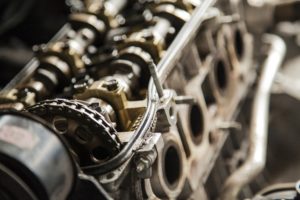 Seal failure can cause serious problems for production and performance in mechanical or hydraulic systems. Without functioning seals, fluids and lubricants will seep out, contaminants can enter, or the required pressure will not be maintained. If seal failure occurs, the machinery or engine could seize up, and the entire system could go offline and lead to extended periods of downtime, replacement of parts, and expensive repairs.
Seal failure can cause serious problems for production and performance in mechanical or hydraulic systems. Without functioning seals, fluids and lubricants will seep out, contaminants can enter, or the required pressure will not be maintained. If seal failure occurs, the machinery or engine could seize up, and the entire system could go offline and lead to extended periods of downtime, replacement of parts, and expensive repairs.
Seals stop functioning for two reasons—they either wear out or fail. In the case of the former, as a preventive measure, system operators schedule maintenance routinely to swap out old seals with new ones. However, seal failure is another animal altogether and is why it is necessary to monitor systems constantly. It’s worth noting that using the wrong seal is a prime cause of seal failure: seals used in joining a component should always be the seal that was intended for that component.
That said, failure can occur due to a number of reasons, ranging from abrasion or contamination to improper installation or material, or some type of erosion or degradation. Below is a shortlist of some of the more common types of seal failure, the symptoms, what to look for and steps to correct the problem.
Seal Failure 101
Abrasion
Loose particles or scrapes along the seal’s surface is a sign of abrasion. It may be due to excessive temperature, a rough sealing surface or poor surface finish, or there could be abrasive particles within the process environment. Be sure to use the manufacturer’s recommended gland surface finish and consider lubing the seal internally. Make sure abrasive components are eliminated from the process environment, too.
High Compression
A flattened seal within a mated surface area is a sign of excessive compression. It could be from excessive temperature or the elastomer was not completely cured before installation. The elastomer may be designed for a high compression set, too, or there may be excessive volume swell from the fluid or chemical. Make sure to use a low compression set elastomer, the right design, and confirm material compatibility.
Chemical Degradation
When seal failure results from blistering, cracking, or discoloration of the material, chemical degradation is generally the culprit. Degradation is observable by the loss of physical properties. The seal material is likely incompatibility with the chemical or thermal environment and the correct chemically resistant elastomer should be applied.
Contamination
When a seal has some type of foreign material on the cross-section of its surface the seal failure is a result of contamination. It may be caused by the process environment or the elastomer is degrading due to a chemical reaction, which means the wrong material has been selected for the job.
Extrusion
A seal that shows ragged or tattered edges on the low-pressure side is failing because of extrusion. It could be from a number of reasons—excessive clearances or pressure, the modulus could be low, i.e., the seal has too much elasticity, the gland edges erode or are sharp to touch, or the seal could be the wrong size. Solutions could be to decrease the clearances and pressure, choose a seal whose elastomeric properties have a higher modulus, make sure you have the proper gland design, or use polymer backup rings.
Installation Damage
Improper installation or the wrong size or type of seal can easily lead to a damaged seal and seal failure. Parts of the seal may have nicks, cuts or gashes. To fix, clean component parts and surfaces to remove any sharp edges or residual material, make sure the seal is the proper gland design, size, elastomer, and the modulus is correct.
Over Compression
If a seal’s surface is entirely flattened or has developed circumferential splits with flattened surfaces, the seal is being or has been subjected to over compression. It may be due to improper design, unaccounted chemical or thermal volume changes, or the seal selected cannot withstand excessive compression. Make sure the seal material has properties compatible with the chemical and thermal environments and also has the durability to withstand or meet the compression requirements.
Thermal Degradation
In high-temperature applications or excessive temperature cycling, if the seal exhibits radial cracks or the surface material begins to shine and soften, it’s likely that the thermal properties of the elastomer are incompatible with the thermal requirements of the system. Select an elastomer with improved thermal stability or evaluate the possibility of cooling the seal’s surface area.


